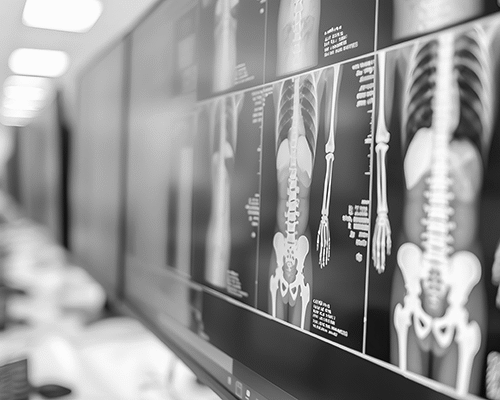Can Hardware Removal be Avoided Using Bioresorbable Mg-Zn-Ca Screws After Medial Malleolar Fracture Fixation? Mid-Term Results of a First-In-Human Study
Authors
Valentin Herber, Viktor Labmayr, Nicole G. Sommer, Romy Marek, Ulrike Wittig, Andreas Leithner, Franz Seibert, Patrick Holweg
Abstract
Ankle is the most common site of hardware removal, mainly performed within 12 months of the primary surgery. The prominence of the metallic hardware is a frequent cause of pain after fracture fixation. Over the last decade, the development of bioresorbable materials based on magnesium (Mg) has increased. Bioresorbable metals aim to avoid a second surgery for hardware removal.
Methods
Twenty patients with isolated, bimalleolar, or trimalleolar ankle fractures were treated with bioresorbable screws made of Mg, 0.45wt% calcium (Ca) and 0.45wt% zinc (Zn) (ZX00). Patient-reported outcome measures (PROMs) including visual analogue scale (VAS) for pain, the presence of complications 6 and 12 months after surgery and the AOFAS scale after 12 months were reported. The functional outcomes were analysed through the range of motion (ROM) of the ankle joint with a standard goniometer. Degradation products and the bioresorbability of the screws were evaluated using plane radiographs.
Results
One patient was lost to follow-up. All patients were free of pain, no complications, shoe conflict or misalignement were reported after 12 months of follow-up. No Mg screws were surgically removed. An additional fixation of the distal fibula or the dorsal tibial fragment with conventional titanium implants (Ti) was performed in 17 patients. Within 12 months after primary refixation, 12 of these patients (71%) underwent a second surgery for Ti hardware removal. The mean AOFAS score was 89.8±7.1 and the difference between the treated and the non-treated site in the ROM of the talocrural joint was 2°±11° after 12 months. Radiolucent areas around the screws were attributed to degradation and did not affect clinical or functional outcomes. After one year, the Mg screw heads could not be detected in the plane radiographs of 17 patients which suggests that the majority of the screw head is degraded without introducing adverse reactions.
Conclusions
At 6 and 12 months, the bioresorbable Mg screws show excellent PROMs without complications or need for screw removal. The resorbability of the screw heads in most of the patients after one year could also provide an advantage over conventional bio-inert implants by avoiding related skin irritation due for instance to shoe conflict.
Share this article
